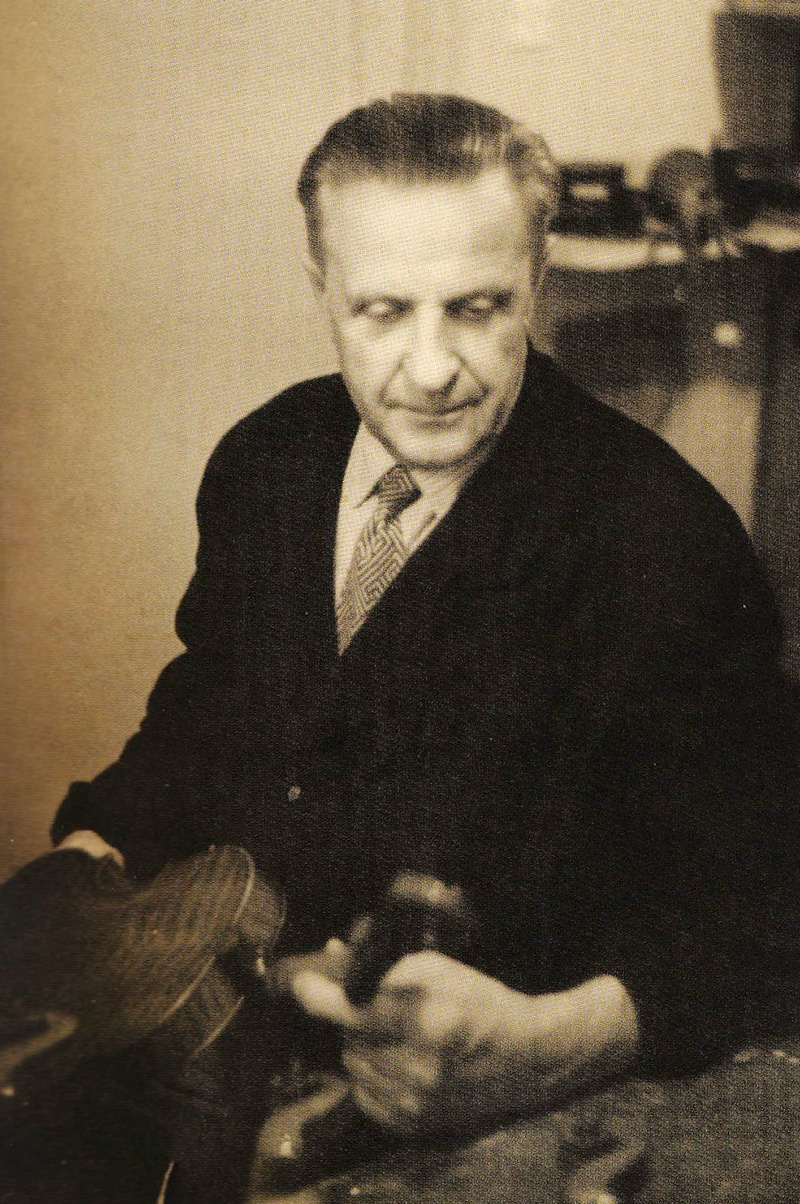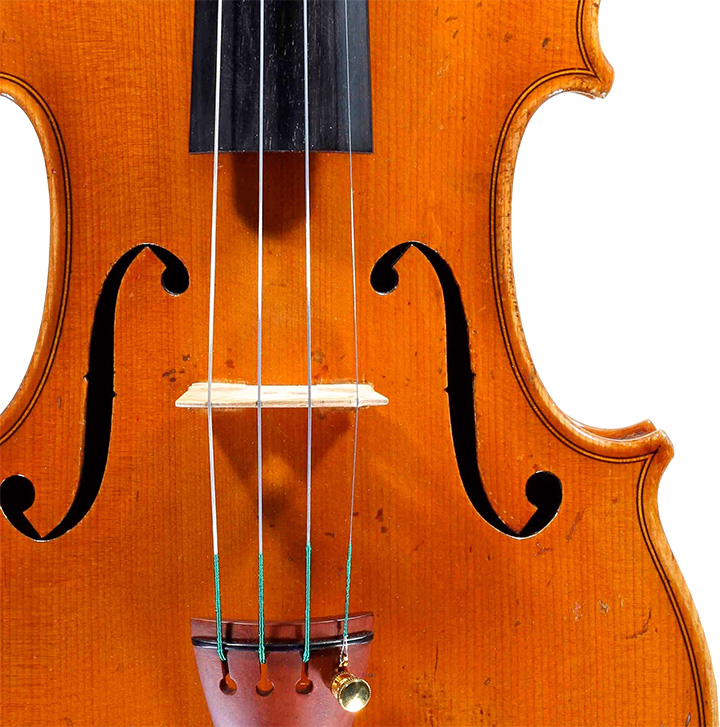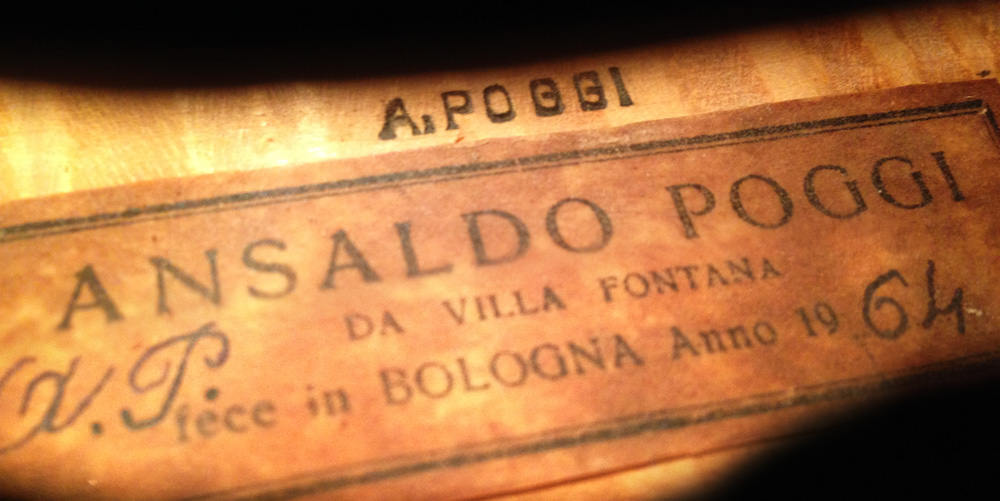|

Ansaldo Poggi (1893-1984) was born in Bologna, Italy, and after graduating from Philharmonic Academy of Bologna as a violinist, he started his violin making at the age of 18 learning from his father, who was an amateur violin maker.
Poggi's father noticed his son's talent and brought him to Giuseppe Fiorini, who was at the time running his establishment "Rieger and Fiorini" in Munich, Germany. On top of repairing and dealing instruments, Fiorini was also the founder and the president of German Violin-Makers' Society. Just when Fiorini was wanting to make instruments again, the World War I erupted and he moved from Munich to Zurich, to where Poggi also moved in order to train with Fiorini. Poggi was able to flourish under Fiorini and was adored and trusted by Foirini that some of Fiorini's works after this period are thought to be the works of Poggi.
After the war ended, Poggi returned to Bologna and the 1920's was to be his first Golden Age period when he was making "Fiorini-style" Stradivari copies. In 1923, he won a silver medal at a violin making competition and won gold medals in 1925, 1927 and 1929.
During this time in Romagna, the construction method was to use the external form as the basis, but Poggi continued to use Fiorini's approach using the internal form instead. This method resulted from Fiorini carefully examining Stradivari's works and also from buying the collection of Stradivari's workshop materials from the renowned violin collector Count Ignazio Alessandro Cozio di Salabue, who was also J. B. Guadagnini's patron. This use of construction method was to influence the violin making in Italy hereafter.
 In the 1930's, while also making Guarneri copies, Poggi began to develop his own style. F-holes were delicate yet uniquely sharp, beautiful purfling was clear and his first-class craftsmanship could be seen in the finishing touches. Because his works as a whole had sharpness and edge to them, they could give off somewhat of a cold impression compared to the works of other makers. However, due to him being a fine violinist himself, the choice of materials was outstanding as he was particular about the tone quality that the instruments produced. Poggi was always after a perfect balance of the top and the back in thickness so the vibration could travel in every corner, resulting in his works having a unique yet very responsive sound production, strength in volume, and tone quality that possess flexibility, brightness and beauty. The varnish, which affects the tone quality, were in fine quality and ranged from reddish and orange gold to pinkish yellow. In the 1930's, while also making Guarneri copies, Poggi began to develop his own style. F-holes were delicate yet uniquely sharp, beautiful purfling was clear and his first-class craftsmanship could be seen in the finishing touches. Because his works as a whole had sharpness and edge to them, they could give off somewhat of a cold impression compared to the works of other makers. However, due to him being a fine violinist himself, the choice of materials was outstanding as he was particular about the tone quality that the instruments produced. Poggi was always after a perfect balance of the top and the back in thickness so the vibration could travel in every corner, resulting in his works having a unique yet very responsive sound production, strength in volume, and tone quality that possess flexibility, brightness and beauty. The varnish, which affects the tone quality, were in fine quality and ranged from reddish and orange gold to pinkish yellow.
In the 1940's, Poggi, due to World War II, was only able to make a few but very fine works, many of which carried his hand written signature on the inside.
The 1950's saw Poggi's second Golden Age period establishing his own individual style, which was a fine mixture built on Stradivari's model with Guarneri's power and Poggi's own method. They were of a top quality and compared to his beautiful feminine works from his first Golden Age period, they showed more masculinity with a hint of obstinance.
It is thought that Poggi may have gotten the unwanted woods from where the old churches were being rebuilt or refurbished, as the dendrochronology reports of some of his works from this period showed that the materials used were from about 300 years ago.
 Poggi's second Golden Age period lasted until about the mid 1960's, after which he worked together with his disciple Giancarlo Guicciardi. Guicciardi also possessed great technique that his works are often hard to differentiate for many, apart from experts.
Poggi's second Golden Age period lasted until about the mid 1960's, after which he worked together with his disciple Giancarlo Guicciardi. Guicciardi also possessed great technique that his works are often hard to differentiate for many, apart from experts.
Poggi continued to make instruments until his death in 1984 and was to become one of the leading 20th century violin makers, who is said to have come closest to Stradivari among the modern Italian makers. His works have been played by renowned violinists as Oistrakh and Milstein and are sought after by musicians, collectors and dealers of today.
| |

